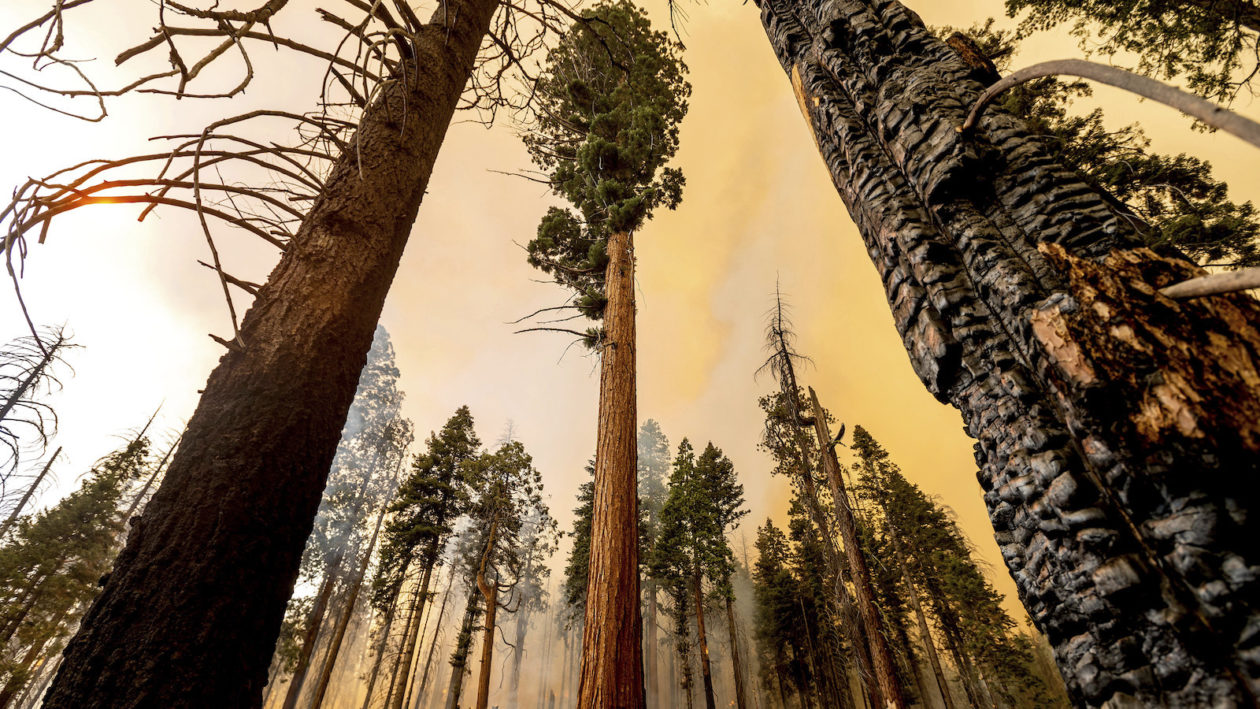

The Windy Fire burns in Sequoia National Forest in September 2021. Noah Berger / AP Photo
In 2015 a lightning strike started what became known as the Rough Fire, which eventually burned more than 150,000 acres of forest east of Fresno and just west of Kings Canyon National Park.
The blaze burned into seven different sequoia groves in Sequoia National Forest, as well as a grove called the General Grant Complex in Kings Canyon National Park. As the flames died down and the smoke cleared, experts realized that an unusually large number of big sequoias had been killed by the blaze — 27 on park land and 74 on national forest.
The deaths of so many sequoias in one year was unheard of, and it deeply alarmed people who research and care for redwoods, some of whom wept at the sight of dead giants that had stood for more than a thousand years. After the Rough Fire, said Ben Blom, director of stewardship and restoration for the Save the Redwoods League, the idea of immortal sequoias no longer seemed to be true.
While the impacts of the Rough Fire were worrisome, it wasn’t until 2020 and 2021 that “things changed [by] orders of magnitude,” said Blom. “We’re talking tens of thousands of big trees dying in those two fire seasons.” It was after those fires, Blom added, that “we realized the big trees were facing an existential crisis.”
The crisis is rooted in climate change — which has caused record heat and drought, more insect pressure, and more high-intensity fires in California — combined with a century-long history of suppressing frequent, low-intensity fire.
In response to the emergency, experts declared a code red and are now working quickly to try to save the giants that remain. Teams of biologists, Native American tribes, and government agencies are urgently thinning the overgrown woodlands that surround the big trees and conducting prescribed burns. Research shows that such efforts help prevent extremely hot fires that can reach the sequoia canopy.
But such “active management” — which includes logging with heavy equipment and chainsaws in protected and unique ecosystems — has also sparked controversy. A bipartisan Congressional bill to further fund thinning efforts is being challenged by […]
Full article: e360.yale.edu
Clean water is essential for life, yet millions of Americans unknowingly consume contaminants through their…
Human brains contain higher concentrations of microplastics than other organs, according to a new study, and the…
From the Office of the Governor: In anticipation of a multi-day, significant atmospheric river in Northern California,…
From Governor Newsom: Scientists, water managers, state leaders, and experts throughout the state are calling…
Photo: A harmful algal bloom in Milford Lake, Kansas, made the water appear bright green.…
An expanded plastic foam coffee cup is at a donut shop in Monterey Park, California.…